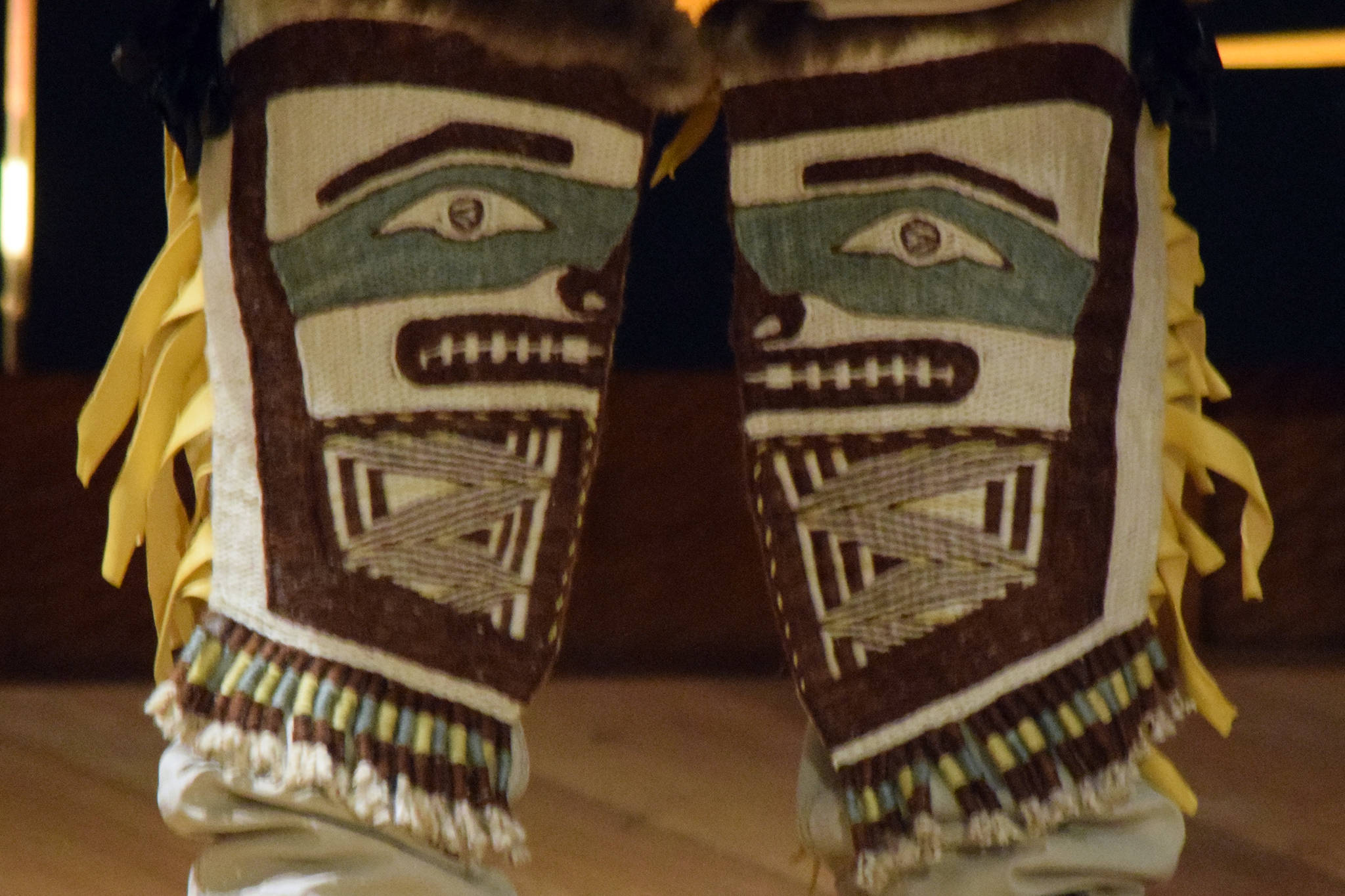Their goal was to make it through the afternoon without crying.
Tlingit weavers Anastasia Shaawaat Ku Gei Hobson-George and Lily Hope presented Chilkat leggings — a type of garment worn on the leg made with a labor-intensive Alaska Native weaving style — Friday as a formal close to Hobson-George’s two-year-long apprenticeship with Hope.
“It feels real that it’s done, it’s over — the leggings and working with Lily,” Hobson-George said after the presentation in Sealaska Heritage Institute’s Shúka Hít clan house.
During the presentation titled “Our Grandmothers’ Wealth,” Hope said she’s proud of her apprentice, who was recently recognized with a Rasmuson Foundation Individual Artist Award. With financial support from the Native Arts & Cultures Foundation, the pair together weaved a pair on leggings that were made using both cedar bark and mountain goat wool.
[Ancient Threads: Weaver will study how to create increasingly rare tunics]
Chilkat leggings look wholly dissimilar from the modern, skin tight article of clothing. When laid flat, they appear rectangular, and when worn they occupy they cover the wearer’s shins. Often, they include fur trim or some sort of fringe. They get their names from Chilkat weaving, which is a traditional form of weaving practiced by Northwest Coast indigenous peoples.
Hope and Hobson-George described the laborious process of creating the leggings. The process included harvesting strips of cedar bark, which were then cooked in slow cookers for a week, and fermenting mountain goat using yeast-like mixture that helps separate the goat’s hide from the wool.
Nature provided a major assist to the project while the goat’s body sat in Hope’s basement, Hobson-George said, because maggots ate away most of the goat’s flesh and hide while leaving fluffy, white fur behind.
“Thank you to the maggots who did the work,” Hope said cheekily.
Then, it was time to wash and comb the hair followed by a lot spinning. About 300 hours of work was put into the project, the weavers said.
“We know why there are so few weavers who work in mountain goat,” Hope said.
After the presentation, there was a ceremony featuring songs, and the new leggings were danced for the first time.
“Thank you for being witness to this,” Hope said. “It’s not often you spend an entire year working on something and bring it to life. We’ve got some friends here, and we’re going to dance life into them.”
The new leggings had some vintage company in the form of a pair of leggings made by Hope’s late mother, Clarissa Rizal and Rizal’s mentor Jennie Thlunaut. Rizal was an acclaimed master weaver. Those leggings served as inspiration for the newer pair, and they were danced at the same time.
Hope said when garments are danced in for the first time, it’s traditional for someone else to wear them rather than the artists themselves. Dean George, Hobson-Goerge’s father, and Elijah Marks wore the garments. George danced in the older leggings and Marks donned the newer pair.
While songs were sung and the men danced, Hobson-George and Hope were wrapped in Chilkat robes, the traditional, woven garments which were traditionally a valuable commodity because they can take a year or more to make.
Hobson-George’s robe was from the Daklawedi — killer whale — clan, and Hope’s robe was woven by her mother.
“This is heavy,” Hope said as it was placed on her shoulders.
Though this project is now complete, neither Hope nor Hobson-George are taking a break from weaving.
Hope plans to complete another Chilkat robe within the year and Hobson-George said in four days she will be in Hoonah for a demonstration. The packed schedule is nothing new for the artists after the busy year of art.
“There hasn’t been one boring moment our entire apprenticeship,” Hobson-George said. “I haven’t been bored once.”
• Contact arts and culture reporter Ben Hohenstatt at (907)523-2243 or bhohenstatt@juneauempire.com. Follow him on Twitter at @BenHohenstatt.

